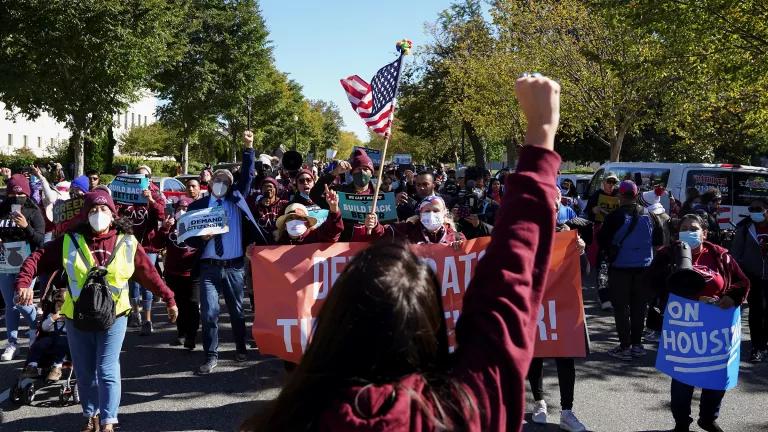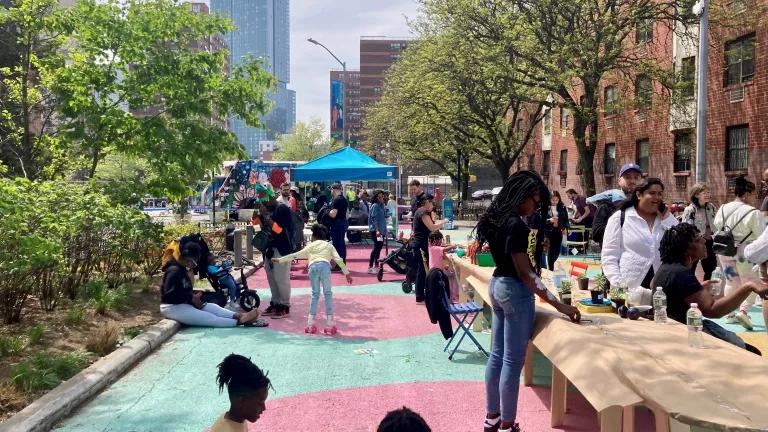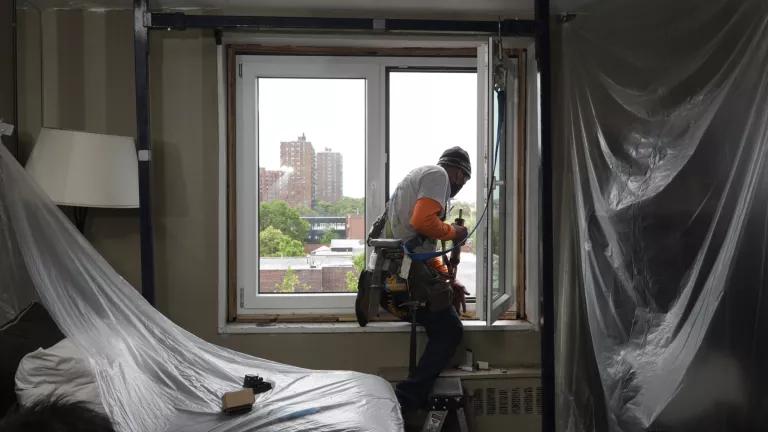A New Framework for Cracking the Nut of Existing Buildings
American Cities Climate Challenge partners release a new resource for cities looking to dramatically cut energy use in existing buildings, an essential reference guide developed from the real-world experience of cities at the forefront of advanced building policy.

Washington D.C.
Increasingly, cities are looking beyond policies aimed at high performance new construction to targeting deep energy improvements in the existing building stock as a key path to meeting carbon reduction targets. Furthermore, the COVID-19 pandemic and the murder of George Floyd has thrown systemic racism into sharp relief and highlighted the need to directly address racial equity in climate policy. Now city policy-makers have a valuable new resource in that effort: a comprehensive framework for creating effective building performance standards (BPS) that hold both climate and equity goals as co-equal desired policy outcomes.
The new publication, Building Performance Standards: A Framework for Equitable Policies to Address Existing Buildings, is an essential reference guide developed from the real-world experience of cities at the forefront of advanced building policy. It breaks down both the basics and the intricacies of BPS for existing buildings and how to engage community throughout the process, from establishing goals to implementing policy.
The Framework was written and informed by national organizations and local government staff already leading the way on building standards with the support of the Bloomberg Philanthropies American Cities Climate Challenge. As part of the Climate Challenge, 25 U.S. cities are accelerating climate action with a focus on the buildings and transportation sectors to power a green and equitable economic recovery.
Recent events have made clear the urgency of making our built environment healthier and more equitable. Climate-driven disasters are unfolding in rapid succession, from infrastructure-melting heat waves to historic wildfires and hurricanes. At the same time, the COVID-19 pandemic has taken away jobs and intensified economic disparities. Affordable, sustainable housing is in short supply at a time when it is desperately needed. BPS are important tools in addressing these concurrent crises.
At their core, BPS set targets for buildings to reduce energy use and greenhouse gas emissions—but local governments can do much more. Successful BPS policies should include assistance for covered buildings, historically underserved populations, diverse workforce development and job creation mechanisms. Here’s where the new framework offers a critical and unique perspective: it outlines an approach to an advanced building policy that dovetails supportive resources for under-resourced buildings and historically marginalized communities.
By setting out deadlines for building performance benchmarks over the long term, a BPS policy can drive significant change while allowing building owners the flexibility they need to achieve targets. But BPS can also perpetuate existing inequities if not carefully designed. Rent increases, rising housing costs, and unevenly distributed benefits are examples of potential unintended consequences that can be avoided by designing an inclusive process to engage and co-create solutions authentically with historically marginalized communities.
While building policies have not typically been developed with equity considerations, cities are increasingly envisioning new opportunities to address community priorities in tandem with climate policy development. The framework captures the latest strategies and tools cities are employing to do this, cementing key learnings from 18 months of biweekly sessions among 11 Climate Challenge cities and seven cities within the Urban Sustainability Directors Network.
During the sessions, Bloomberg Climate Challenge national partners worked through the nuts and bolts of developing a BPS policy, with local government participants sharing their on-the-ground insight to then discuss and learn from one another. The published framework includes practical, real world examples of BPS policies and processes from cities such as St. Louis, which recently became the first city in the Midwest to pass a BPS policy, Washington, D.C., and New York.
While many cities are advancing ambitious construction codes and energy efficiency standards for new buildings, the majority of local emissions in urban centers comes from the existing building sector, and deep energy use cuts in existing buildings are required to actually reduce local greenhouse gas emissions and make the built environment climate resilient. When done correctly, a BPS policy can be a potent tool for meeting many important local priorities at once: creating healthier, more affordable homes and businesses for all local residents, spurring local job creation, and lowering local greenhouse gas emissions.
Leaders in cities across the country can draw both inspiration and real-world guidance from this framework. It's a must-read resource for anyone who is working to ensure no community is left behind in the transition to clean, resilient buildings.




